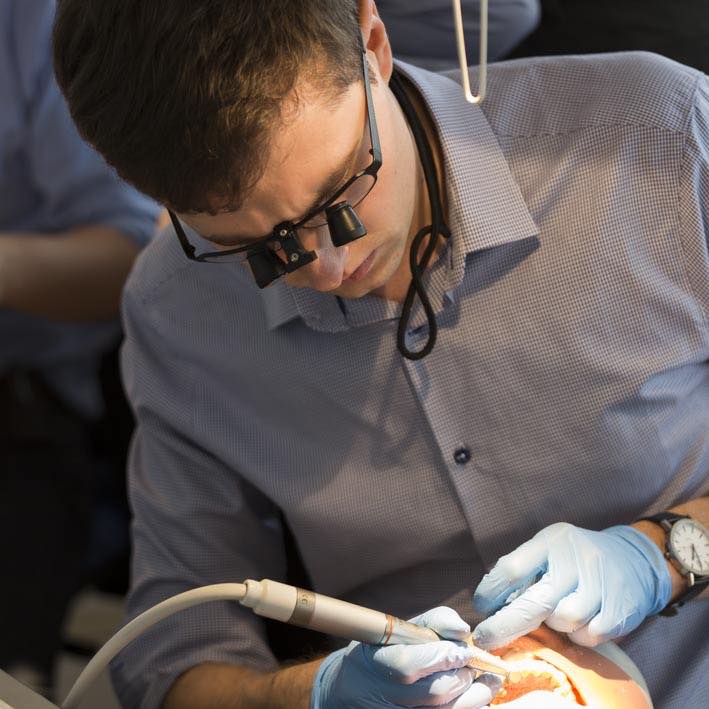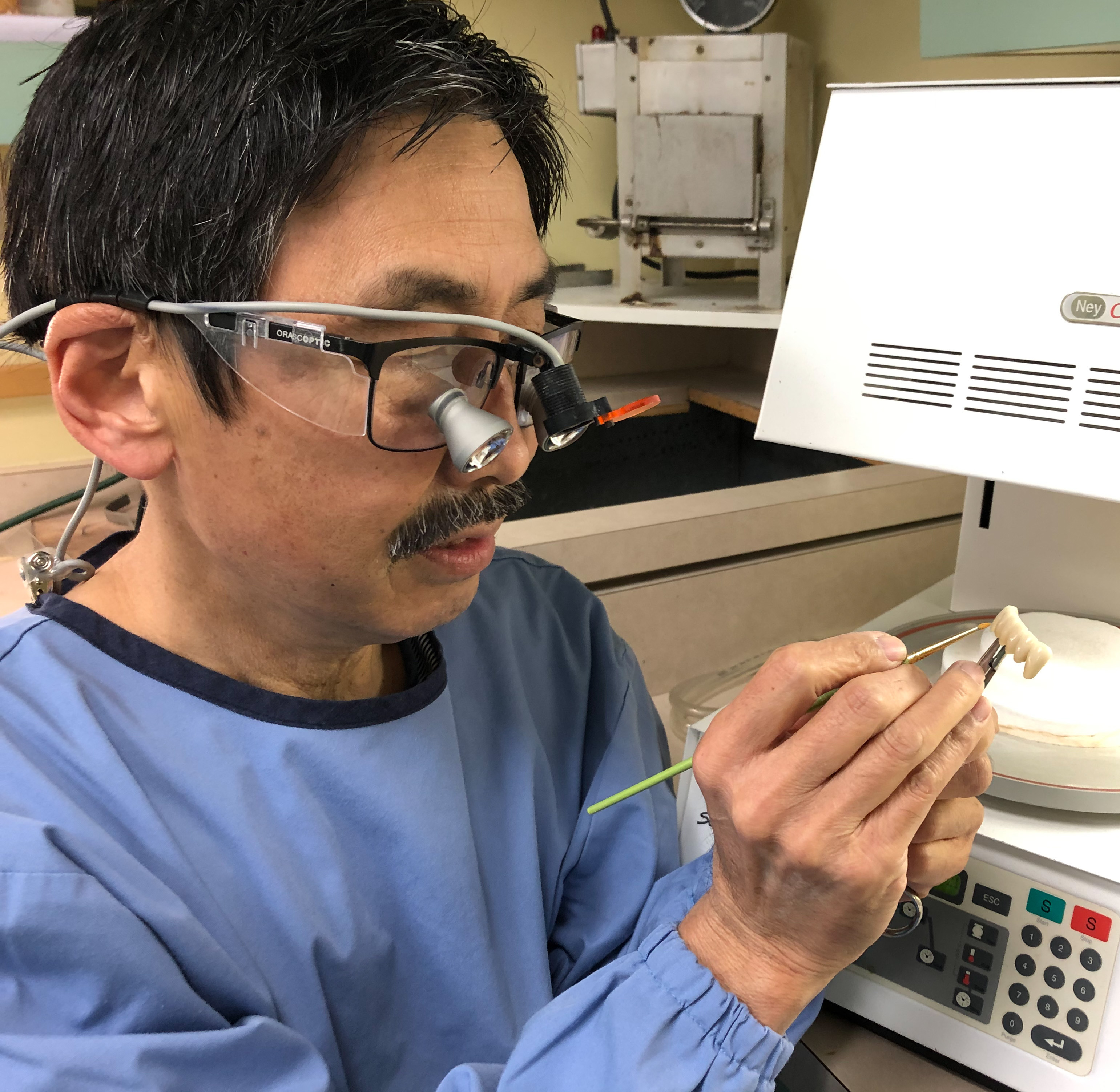Learn the Borders Technique with Dr Mindaugas Kudelis
Build Posterior Restorations Like a Kung Fu Master
Dr Mindaugas Kudelis is a master at mimicking natural aesthetics in posterior restorations. He has practiced on thousands of teeth - complex restorations - rebuilding cusps, ridges, and lobes with precise asymmetry, making them look perfectly natural.
Early in Dr Kudelis’ masterclass he acknowledges his teachers, world renown dentists in their own right. His gratitude for them reminded me of a quote by Isaac Newton,
“If I have seen further than others, it is by standing on the shoulders of giants.”
It would be a gift for any great teacher that a student such as Dr Kudelis stands on their shoulders. With their guidance and his passion, determination, and continuous practice, Dr Mindaugas Kudelis has mastered posterior restorations.
In mastery the complex becomes simple. A kung-fu student endures test after test and endless pain. From losing his balance, he learns a small detail, then begins his training again, then again. When the student moves into his master phase, he will repeat the same movements he has executed countless times before, but this time he is relaxed. He sees with open eyes, embodies stillness and movement, and responds to unpredictable actions as if it were a part of the plan all along. The kung fu master would sense an affinity with Dr Mindaugas Kudelis’ prowess, his clear sighted gaze passing over gnarly occlusal surfaces. He knows how the restoration of them can be broken down into simple teachings. He even gave it a beautiful and simple name: Borders Technique. It’s a roadmap, of sorts.
We have a roadmap, where then is our destination?
The first stop is predictability. When posterior restoration skills are honed from practicing the Borders Technique and studying a little anatomy, the length of time you need to complete the perfect restoration becomes consistent. You will build a body of work that speaks for you as a dentist. Then if your patients are impressed with your work, you will indeed have a successful practice.
It’s hard to imagine that anyone can know the finest details on the map of cusps, or the direction each central lobe faces. If only there were a set of rules one could follow to get perfect results with predictability and speed. Why only a master dentist of the kung fu ilk, would have the virtuosity to formulate simple guidelines on how to rebuild that perfect molar.
Dr Mindaugas Kudelis’ Border Technique is your roadmap: an easy-to-understand guide that will show you how you can get practicing and create beautiful posterior restorations. I will share this with you further down the page, but not before we discuss what not to do. You may think that learning the Borders Technique from a master dentist is 100 percent of the agenda, when it is in fact just as much about learning from their mistakes.
These, for instance, may not deliver wild success
- Looking at the groove to try to recreate the surface.
- Looking at the occlusal surface through pieces of grooves.
- Taking a piece of composite, putting it on the anatomy then try to carve it with sharp instruments.
- Carving composite when it is soft - and sticky; or hard - and unforgiving.
- Creating such a complex structure in one go.
- If you get lucky and make a fine looking occlusal surface but the patient bites down and it’s not correct; it’s over-built, and now you need to grind it down and make it flat.
Alternatively, you could look at the occlusal surface and deconstruct it. Deconstruct it to understand it, you know what I’m sayin? No ragrets.
The Briefest of Overviews of the Borders Technique Goes Like This
- Instead of looking at a whole structure of the occlusal surface, look at a few, maybe six structures that are quite simple.
- You can place four composites in the right place, focusing on one cusp at a time.
- If each cusp were a country and the grooves were the borders, you can see a map inside each molar.
I have renewed respect for national borders.
Dr Kudelis used two molars to illustrate the way he breaks them down into smaller structures using the Borders Technique. He shared a small collection of rules of anatomy, and said that if you want to learn something complex like the occlusal surface, you have to start with these basic cues:
- Basic primary anatomy. Try to memorise how many cusps molars have. Where are the reference points that will guide you on the occlusal surface.
- What is the direction of the central lobe?
- Secondary anatomy: where are the borders, highspots, and ridges?
- Shade: it is possible to use one shade for all of the occlusal surfaces for posterior teeth.
What I love about this masterclass is that since Dr Mindaugas Kudelis is a practicing dentist; he knows that even the most water-tight plans can go pear-shaped. For example he shows us one restoration he built while he was still in the student phase of refining his knowledge and skills, and built the central lobe in a way that it pointed toward the centre of the tooth, rather than the opposing cusps.
He also offers a plan B, for when there is no time to build your knowledge of the secondary anatomy into your restoration.
This masterclass makes me feel confident to want to try to revolutionise my craft - in a parallel universe where I am a dentist, because I’m not in this one. When Dr Kudelis encouraged me not to get too complex in the beginning, I felt enthusiastic and up to the task of taking baby steps in my next fantasy posterior restoration appointment.
Dr Kudelis offers simple and most encouraging steps to create natural-looking posterior restorations:
- Know the map of the cusps.
- Understand occlusal anatomy. Look this up in your own favourite textbook or website.
- Observe pictures of natural looking teeth. Anatomy is quite simple. Simplicity is the ultimate sophistication.
- Ask a Lab for plaster models, reference models. Technicians will have them from their study time.
You’ve got to watch the Borders Technique masterclass.
Tell me it won’t make you a better dentist. Watch it here.



